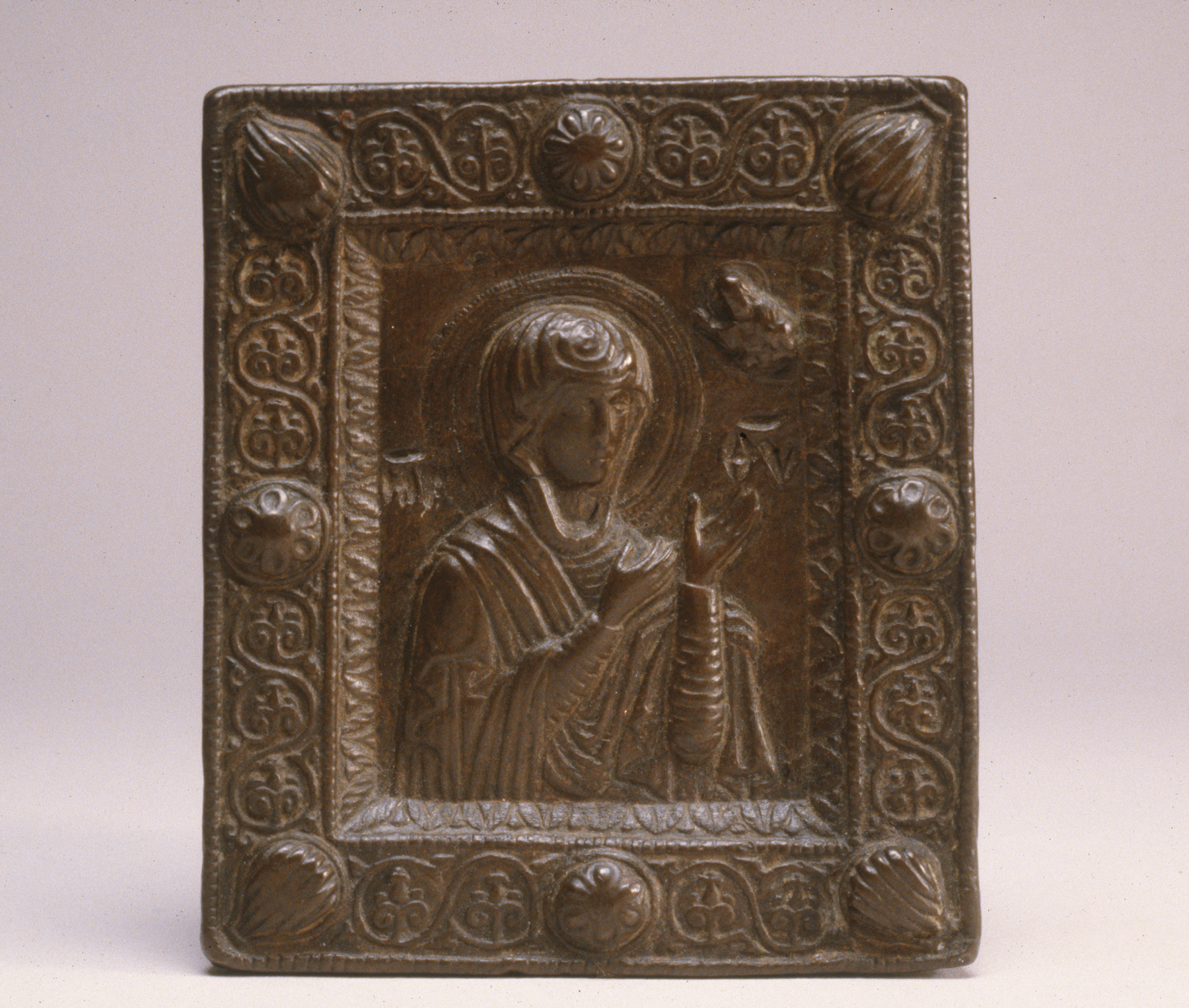Virgin Mary
(Byzantium and Early Russia)
Bronze icons were a popular, inexpensive substitute for those made out of more precious metals. The Virgin is shown as an intercessor with her hands raised in prayer, turning toward Christ in the upper right corner. This portrait type of the Virgin "Hagiosoritissa" comes from an icon in the chapel of the Holy Shrine (in Greek, Hagios Soros) in Constantinople, where relics of the Virgin's mantle were preserved.
Provenance
Provenance (from the French provenir, 'to come from/forth') is the chronology of the ownership, custody, or location of a historical object. Learn more about provenance at the Walters.
Henry Walters, Baltimore, [date of acquisition unknown] by purchase; Walters Art Museum, 1931, by bequest.
Geographies
Turkey, Istanbul (Constantinople) (Place of Origin)
Measurements
3 3/4 x 3 1/4 x 1/2 in. (9.5 x 8.3 x 1.3 cm)
Credit Line
Acquired by Henry Walters
Location in Museum
Not on view
Accession Number
In libraries, galleries, museums, and archives, an accession number is a unique identifier assigned to each object in the collection.
In libraries, galleries, museums, and archives, an accession number is a unique identifier assigned to each object in the collection.
54.83


